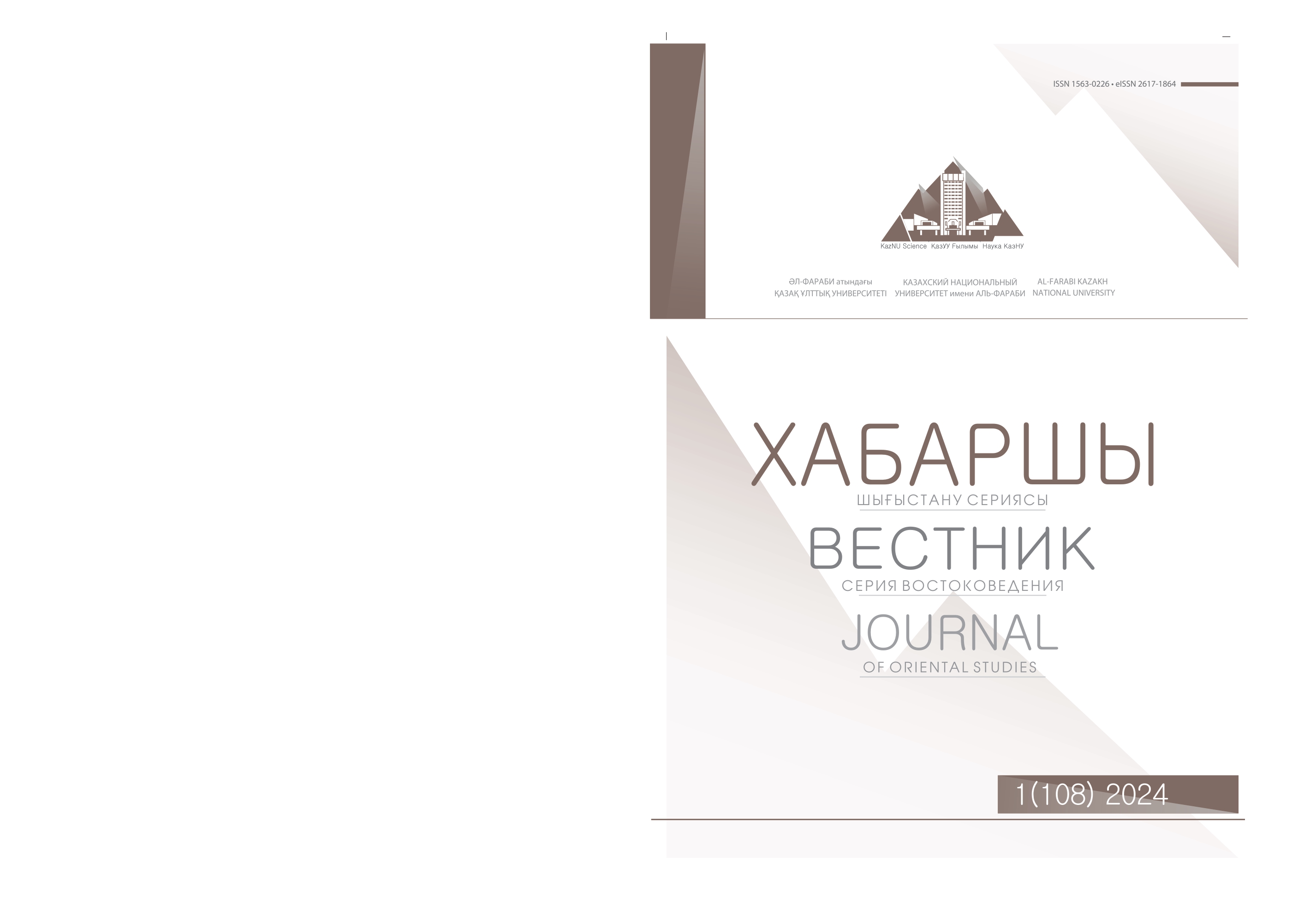Development, formation periods and language features of turkish literary language before classical ottoman language
DOI:
https://doi.org/10.26577/JOS.2024.v108.i1.01Keywords:
Old Anatolian Turkish, Ottoman language, Oghuz-Turkmen languages, Turkish, literary languageAbstract
The article provides information about the periods of writing of written monuments, language materials, language features, which played an important role in the development and formation of the modern Turkic language. Particular attention is paid to political, social, cultural factors, including the struggles for the formation of literary languages of the Oghuz-Turkmen peoples, which until the 10th century used and evolved only one literary language, which led to the branching of Turkic languages after the 10th century. Scholars such as F. K. Timurtaş, A. Caferoğlu, A. B. Ercilasun, Z. Korkmaz, G. Gülsevin, A. Acar analyse scientific writings and scientific findings related to the ancient Turkic language prevailing in Anatolia, analyse the problems of the era, show the special features of each period during the description of the periods and distinguish them comparatively. Due to the differences and similarities between the literary norms established in Anatolia before and after the establishment of the Great Seljuk State (1037-1157), the Rum Seljuk Sultanate (1077-1038), the Ottoman Empire (1453), the analysis is carried out on a scientific basis. The use of linguistic elements reflecting the special features of the Oghuz-Turkmen language in the ancient Turkic texts, the examples highlighted by Mahmud Kashgari, the features of the written language of the modern Turkic language and its place in Turkic languages are widely spoken about.




